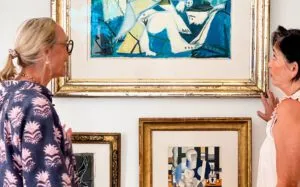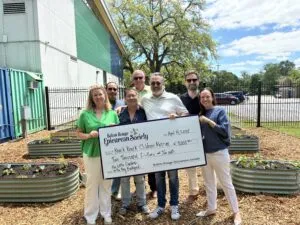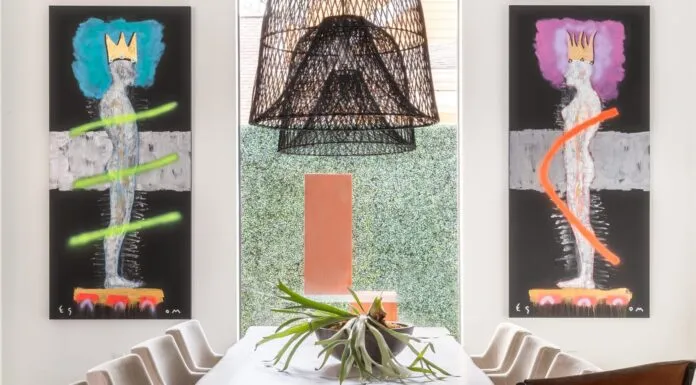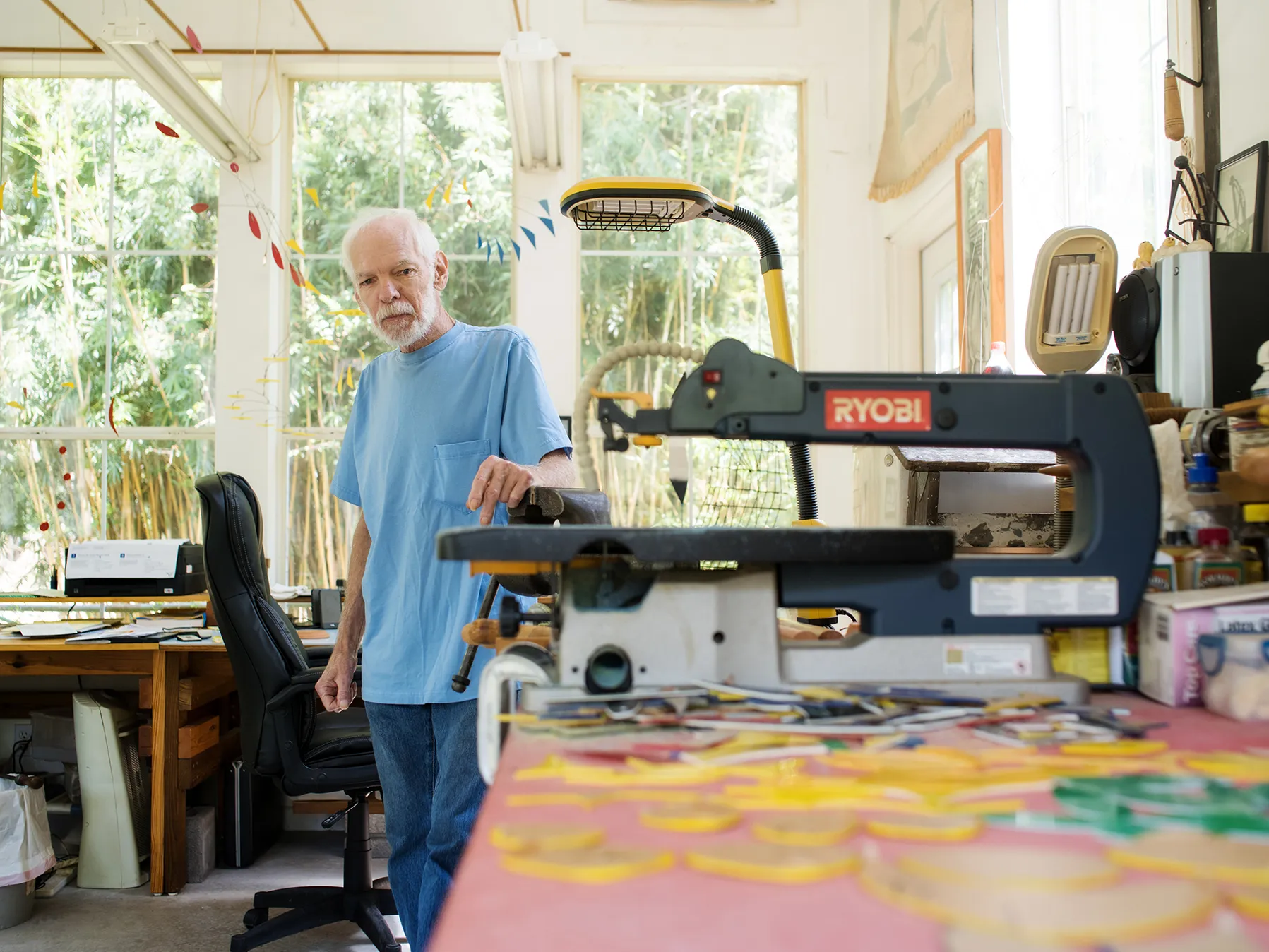
Up in the air: Mobiles are more than child’s play for artist George Ufford
A retired New Yorker sits in a glass atrium in his Kenilworth backyard, primary colors dancing around him, the Eagles blasting from the stereo. With a cigarette draped between two fingers, artist George Ufford gestures to the thick bamboo beyond the panes. “Look at the lines,” he says. “Look at the lines in the bamboo.”
The large mobiles that encompass the body of Ufford’s work hang from the ceilings of his workshop, his home, galleries around town—flat plexiglass objects bouncing around and slightly swaying, suspended from the air by a small wire. The objects look vaguely familiar, but aren’t quite shapes in the traditional sense. They’re gently sloping triangles with soft edges, or something reminiscent of a fin, or what could be—maybe—a butterfly’s wing. The inspiration comes from the avid gardener’s “plant hospital,” as he calls his backyard, visible through floor-to-ceiling windows in his workshop.
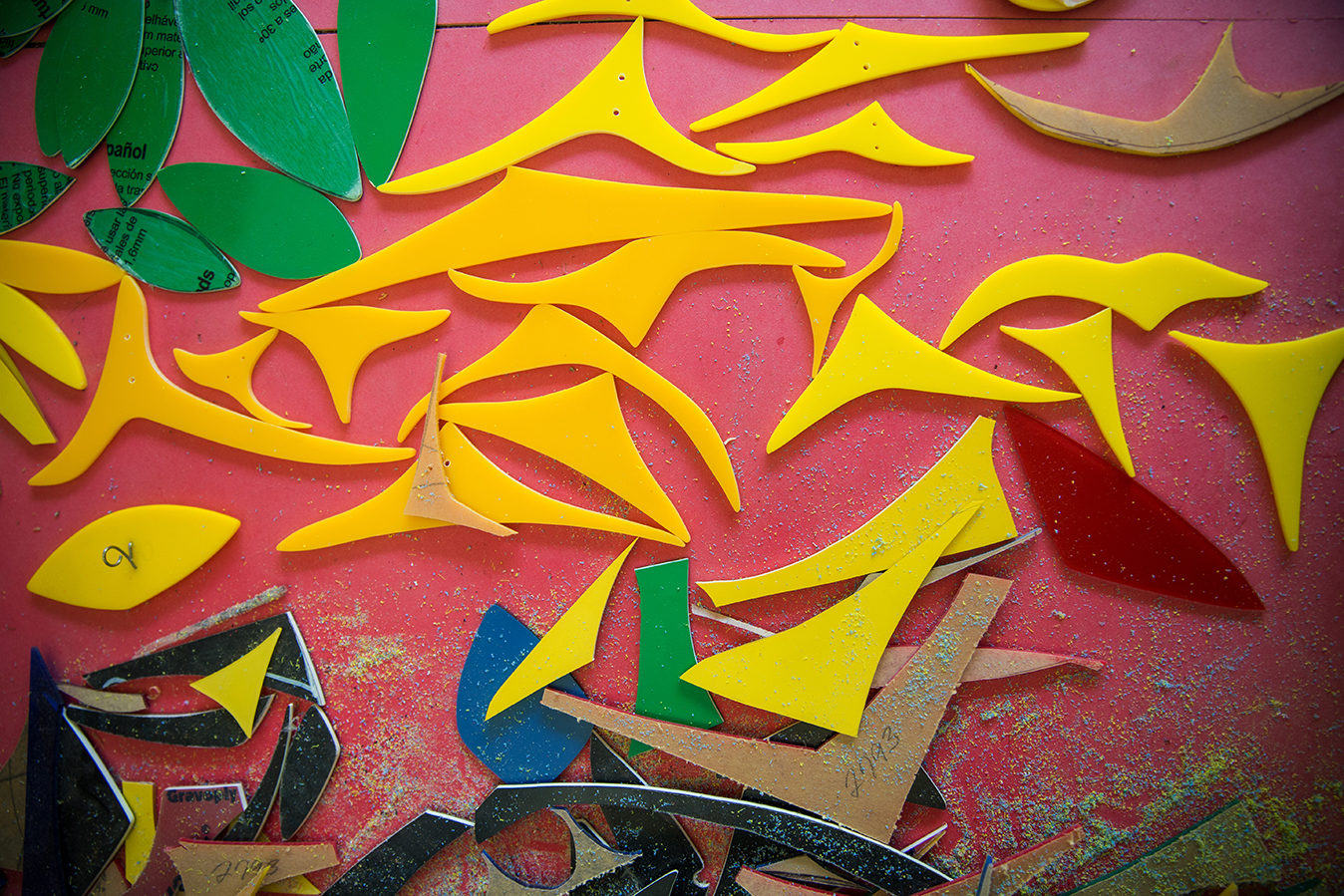
The purple flowers of Ufford’s prized althea plant tower over his backyard storage shed, the overall shape of the blossoms a constant focal point for the artist. When he built his workshop in 2004, he started with the windows, so he could see his lush gardens outside and have the light pour in. Ufford called a local company he did business with and asked for any windows “gathering dust in the back room, maybe an odd size.” The owner said yes, he did have eight odd-sized, 3 x 7-foot windows. “One, two, three…” Ufford counts all eight windows while laughing, having designed and built his studio and his view around the reclaimed treasures.
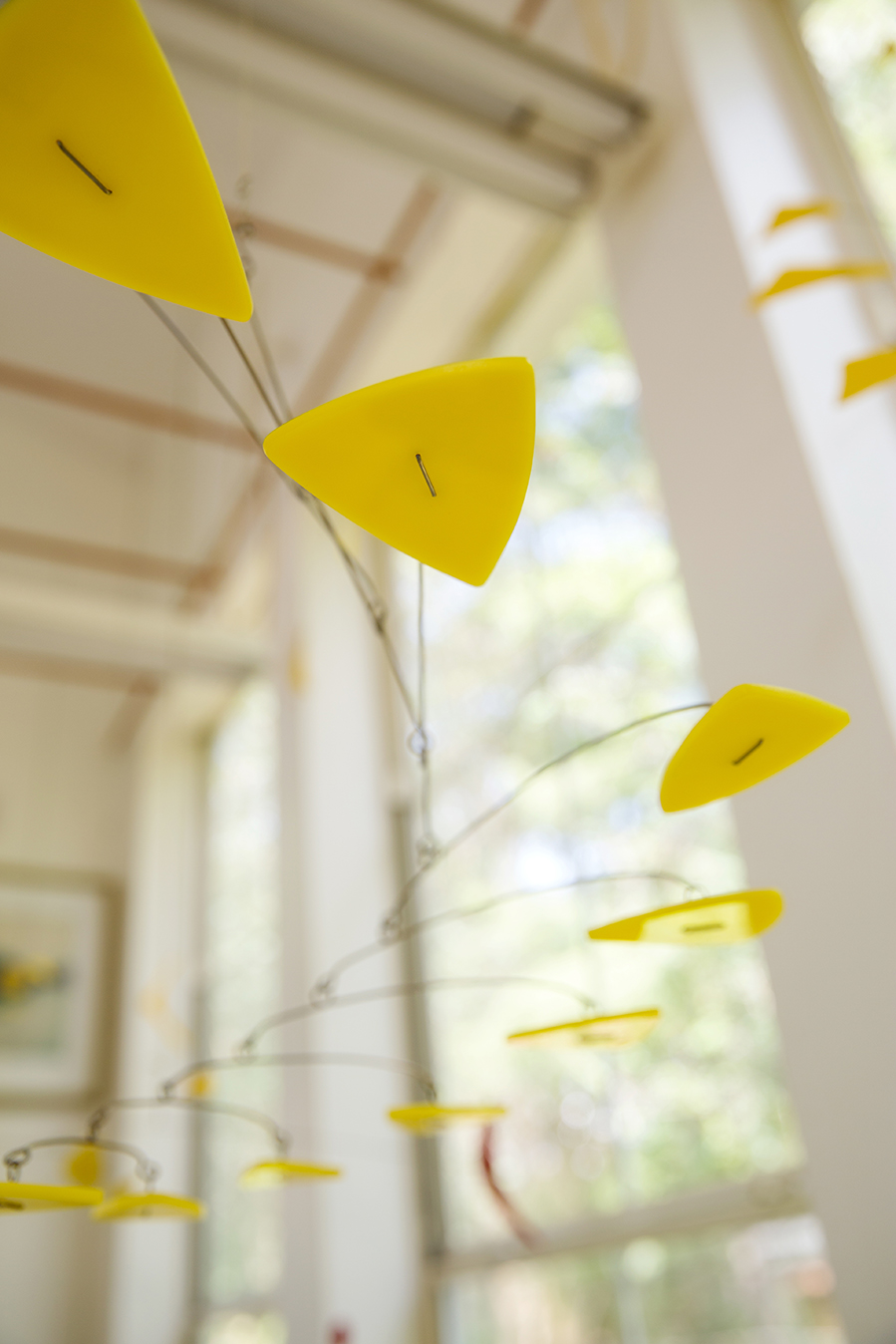
Ufford spends time in the garden every day, planting butterfly weed to attract the monarchs on their migration, cleaning up the mess from the hackberry tree, spreading gravel on the winding path, standing in the shade of the crape myrtle and looking for turtles in the canal out back. He can name every species of plant and animal in his environment. It’s here that his mobiles begin to take shape.
His early love of planting was instilled in him by his grandfather, a sharecropper who “owned land from Miami to Montreal,” he says. More than a hobby gardener, he made and lost two fortunes, but kept the third one, Ufford says.
When Ufford first began crafting mobiles in his earlier life in New York, the galleries in Manhattan had no interest in his art, and neither did the New Yorkers. “Nobody bought anything,” he says. When he first moved to Baton Rouge in 1990, he showcased his work in a gallery on Magazine Street in New Orleans. A couple came in, chatted with the owners, and left. They returned the next day and bought three mobiles “and took them back to New York City, where they lived!” he laughs. Now, in addition to galleries and coffee shops across the Capital City, Ufford’s work can be found in homes in France, England, Canada and Italy, that he knows of.
Ufford made his living as a big crane operator, responding to the needs of big firms who called him in for shutdowns and turnarounds for weeks on end. Then he’d have two to four weeks off to hone his craft. He’s now retired for the fourth time and enjoys sleeping until noon, working on his art and, of course, gardening. When asked about his favorite piece he’s produced, Ufford isn’t sure, but he always knows his least favorite. “The one I’m working on now!” he says, as any artist can relate.
On the way out, we stop to inspect a large banana spider in the garden. He makes me walk around the front of the intimidating web to check it out. “Look at it,” he says. “Just beautiful. Look at the stitching,” he says, as he traces it with his hand, the wheels obviously turning in his head.






